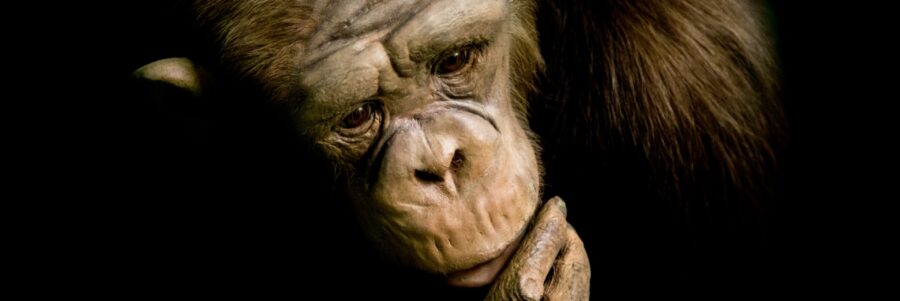(Part Two of Two, Transcript of a Talk Given in Wichita.)

Last month in transcribing the talk given at our Wichita, KS affiliate, the Southwind Sangha in September, about halfway through the recording, we reviewed the wonderful Chinese poem modified by Master Dogen, following the ancient tradition of transmitting the teachings orally:
So Zazenshin: Acupuncture Needle for Zazen. I’ll repeat the first line twice, and some of these lines repeat, anyway. I’ll repeat the first line twice, so that you can catch up. It’s a form of hear-say; as soon as you hear it, try to say it. You don’t have to say it loud, but just try to say it, and try to hear and say what I am saying. This is the way the teachings were handed down the first four hundred years or so. They weren’t written down anywhere. You couldn’t go read the book. You had to go listen. And you had to chant, along with the people, if you were going to learn these (teachings). So I think you’ll find it an interesting exercise (based on Shohaku Okumura trans.):
The essential function of buddhas
and the functioning essence of ancestors
actualized within non-thinking
manifested within non-interacting
Actualized within non-thinking
actualization is by nature intimate
manifested within non-interacting
manifestation is by nature intimate
The actualization by nature intimate
never has defilement
manifestation by nature verification
never has distinction between absolute and relative
The intimacy without defilement
is dropping off without relying on anything
Verification beyond distinction between absolute and relative
is making effort without aiming at it
The water is clear to the earth
a fish is swimming like a fish
The sky is vast and extends to the heavens
a bird is flying like a bird
After reciting a second time, we followed with a discussion period, examining the various things that stood out, remembering that no one had any printed text to refer to in the discussion (Zazenshin is available in our “Zen Practice at Home” manual of daily liturgy). Toward the end of last month’s segment, the question of non-thinking stood out, and is the basis for the beginning of this segment:
How about you?
Oh, just the fact of non-thinking. I don’t know; that just caught my attention, actually.
Actualized within non-thinking. It refers to Fukanzazengi, which is another, the first tract that Dogen wrote down, when he was only 25 years old, maybe 26. When he came back from China, he had students already, and they wanted him to write something they could refer to when he was not around. Fukanzazengi means Universal Principles of Seated Meditation, or Promotion for Zazen, that kind of thing. And he actually refers to an incident there, these koans — you’ve heard about koans? A koan is (clapping hands), You know the sound of two hands clapping. (holding up one hand) What is the sound of one hand?
It’s an illogical riddle that is meant to cast something into your mind that you can’t solve with the monkey mind. You know, you can’t analyze it or figure it out. So you have to… penetrate it, or go beyond it. Go beyond thinking, or go beyond reason or logic, in order to get it. If you answer that question, what is the sound of one hand? And the teacher accepts your answer, they say the teacher may then say, how big is that sound? (laughter) So there’s always deeper, deeper, deeper, right?
So he quotes this incident where a teacher is sitting there in zazen, and his student comes along, and says — and this is unbelievable that you would have your teacher sitting there in zazen, and you would say something to him; you would bother him (laughter) — “What are you thinking, sitting there in that mountain-still state?” You know, like a mountain. And he said, “I am thinking not-thinking.” This is all translated, of course, from Chinese. And he said, “How can you think not-thinking?” And the teacher said, “It is not thinking.”
Well, Dogen said, this is non-thinking. When we’re sitting, we may think, or we may not think. There are periods of time when thinking stops, and you’re just not thinking anything in particular — ding-dong — you know. And then as soon as you maybe recognize, Well hey, I haven’t been thinking for a while — suddenly, you’re thinking. (laughter)
But the point is, it doesn’t matter whether we’re thinking or not. That’s not what we’re doing. It doesn’t have any real influence or effect on what we’re doing. Now in school, and when we are involved in projects, some of our thoughts are very important. A thought that occurs to you during sitting may be lie a Eureka! or an A-ha! moment.
So a lot of teachers, myself included, recommend keeping a notepad next to where you sit. When something like that happens, just jot down some keywords, so you can get back to that later. Because our thoughts, our projects, and so forth, the engagement that we have with society, is important, and is part of our practice. So we want to do it well. So you don’t want to be sitting here, you know, ruminating, and worrying that you’re going to forget that important thought. That’s just getting in the way. So you just jot it down. Then you come back to this.
So that does two things. It does what Dogen says early in Fukanzazengi: he says “Set aside all everyday concerns.” When you’re doing zazen; set them aside. So this is skillful means, or an expedient means, or a trick, you might say, for setting aside our everyday concerns. We jot them down.
Because I’m a designer, sometimes when a visual idea occurs to me, I do a quick sketch (gesturing). So I won’t forget that. You know, the way something should go together. It just occurs to me. Because when you’re sitting your mind is much more clear than usual. So there is no reason not to do that.
The second thing it does, that I think is much more important, is that it brings us back to this (pointing to floor) — and it says, Well then, what is this? — if it’s not that stuff (pointing to notepad). What is this about, right? What is zazen about? It’s not about that stuff; we are setting that aside; returning, to what? (giggles)
So that question, I think, is a rhetorical question; it’s not necessary to answer. And in fact, if you try to answer it, you’re getting in your own way again. But if you continue to ask that question, What is this about? What am I doing? (laughing)…you know. Not Why? — “Why” is a religious question — we don’t ask religious questions in Zen. But, What am I doing? You know, What is this? So… I think that’s important.
Well, Dogen is referring to this incident, between this monk and his teacher. The teacher is stating, out of this state of insight, or enlightenment, that this is not thinking. It is something that is primordial to thinking.
You might say thinking is, on this upper level (pointing to the skull), outer cortex is all the highest levels of thought. In Japanese, called “third-nen.” Philosophy, science, mathematics, all the greatest poetry, discoveries, and so forth — outer cortex stuff. As we move into the inner cortex, it’s more simple, “second-nen.” Still name-and-form — namarupa in Sanskrit — still you know, we’re not going out of our mind, here; it’s still ordinary consciousness. But it’s not so complicated, not saying, Oh: grass mat; that’s a kind of carpet; carpet consists of cotton; carpet is made from… (giggling) you know, on and on and on and on… made in Dalton, Georgia (laughter). Thousands and thousands and thousands of interconnections and relationships. This is all third-nen, outer cortex. It’s not very useful when we are doing zazen. It’s like, I’m getting off, again; jot it down if it’s important.
We think great scientists, great poets, great authors, have come to their insights through a process that is very similar to zazen. Including Einsten. He describes his “thought experiments” as very visceral, gut-level stuff. It wasn’t actually thinking, he said.
So as we proceed in this way, you can see we are going from very complex, outer, third-nen stuff, to second-nen, to first-nen, where you might say it is just simple awareness, of being in environment. So Zen poses, perhaps, that there is a zero-nen level. There is a primordial level of consciousness, in which you cannot even say that there is subject/object.
Zazen, sometimes called shikantaza, meaning “just precisely sitting,” this form of meditation, is not really a meditation, ultimately. When we focus on the posture, or we focus on the breath, then it’s subject/object. So that’s a meditation, right? If we focus on counting our breaths, that’s a meditation. The subject is focusing and meditating upon an object.
But ultimately, because this all simplifies and clears itself out, at one point there is no more subject meditating upon an object. It’s called objectless meditation, where subject and object have come together. In Precious Mirror Samadhi, it says it’s like form and reality reflecting each other [form and reflection behold each other]. As if it’s one. It’s not two. It is definitely not-two. We don’t assert that it is one.
So this is rather mystical-sounding, but if you think about it, it is kind of a long-term, natural process, just as you adapt to the weight of your clothes. You and your clothes have “become one,” right? When I mention the weight of your clothes, you can feel them again; you can separate subject/object. If you sit on this cushion long enough, your butt becomes numb. (laughter) And then there’s no more cushion; there’s no more separation of cushion, just this fuzzy area of sensation.
So this process continues, and deepens and deepens and deepens, until self-and-other are no longer separate. Mind-and-body; subject-and-object. This is why it is called “objectless meditation,” which is a contradiction in terms. (laughter) So Zazenshin is pointing at this very closely, you know: “…making effort without aiming at it.” We’re still making effort, but there is no object. Very difficult, in a way. Existentially, very difficult. Not like most other things. So anything else on Zazenshin?
[Announcements]
So, let’s close with Dogen’s Vow, which is a little longer, but it speaks to a little more of the philosophy, of why we do this. Zazenshin is a poem, pointing at sort of the essential nature of zazen. This one is why we practice Zen, you might say. We can do it the same way. “Dogen’s Vow: Eihei…” is Dogen’s name. Eihei means “eternal peace”; that’s one of his dharma names. Eiheiji is the monastery established by him; it’s the circular flower on your wagesa, which represents Eiheiji; the other flower represents Sojiji, which was founded by Keizan, a few generations after. These are the two main [Soto] training temples in Japan today. So Eihei Hoso Kotsuganmon; this is “Dogen’s Vow.” Again I’ll say the first line twice… (reciting)
We vow with all beings from this life on throughout countless lives
to hear the true dharma
That upon hearing it no doubt will arise in us nor will we lack in faith
That upon meeting it we shall renounce worldly affairs and maintain the
buddhadharma
And that in doing so the great earth and all beings together will attain the
buddha way
Although our past evil karma has greatly accumulated indeed being the
cause and condition of obstacles in practicing the way
May all Buddhas and Ancestors who have attained the buddha way be
compassionate to us and free us from karmic effects allowing us to
practice the way without hindrance
May they share with us their compassion which fills the boundless
universe with the virtue of their enlightenment and teachings
Buddhas and Ancestors of old were as we we in the future shall be
Buddhas and Ancestors
Revering Buddhas and Ancestors we are one Buddha and one Ancestor
awakening Bodhimind we are one Bodhimind
Because they extend their compassion to us freely and without limit we
are able to attain budhahood and let go of the attainment
Therefore the Ch’an mas-ter Lung-ya said:
Those who in past lives were not enlightened will now be enlightened
In this life save the body it is the fruit of many lives
Before Buddhas were enlightened they were the same as we
Enlightened people of today are exactly as those of old
Quietly explore the farthest reaches of these causes and conditions as this
practice is the exact transmission of a verified Buddha
Repenting in this way one never fails to receive profound help from all
Buddhas and Ancestors
By revealing and disclosing our lack of faith and practice before the
Buddha
We melt away the root of transgressions by the power of our repentance
This is the true and simple color of true practice of the true mind of faith
of the true body of faith
(Trans. Shohaku Okumura-roshi)
So, what stood out for you there, if anything?
Sounds awfully religious.
We’re getting a lot of help from the buddhas and bodhisattvas, aren’t we? (laughter) Remember, usually, in these things when he speaks of the buddhas and bodhisattvas, that’s you! So the buddha who is having this realization, and helping you, is you. (laughing)
It’s funny that she said it sounded religious, because I felt like I had a religious experience, (laughter) and I’m atheist. So it was a very pleasant feeling.
I’ve memorized these things by setting them to music. But I also memorize them…my brother is — my older brother (I only have one brother) — my brother is a jazz pianist and a teacher of jazz and classical music. He teaches people how to just play the instrument, if they are trained classically — how to improvise. But he said when he is teaching a person to play a piece of notation, he has them memorize the last measure first. You may have heard of this technique. Then the measure before that; and then the measure before that. So that when you memorize that measure, and then you memorize the next one, you can go all the way to the end. There’s no blockage. You memorize the third measure, fourth, and so on, you can go all the way to the end. In a piece you’re memorizing.
So I started applying that to this, and I did the last two lines:
This is the true and simple color of true practice of the true mind of faith
of the true body of faith
And I couldn’t get that “This is the true and simple color of true practice…” Why would you say “color“? You know if you think about it, we say its “colored by this” or “this has the color of that…” [Simon] Garfunkle said that, “I want it a little more purple…” (laughing) He didn’t have any technical ability in music. (laughter) The orchestra would have to figure out what he meant by purple. [Paul] Simon did, you know. But he was long gone. (laughter) So:
This is the true and simple color of true practice
And then:
of the true mind of faith of the true body of faith
We would say: of the true body of faith of the true mind of faith. What you say last — like you pointed out with the fish and the birds — what he said last is always he most important. So the body is more important in Buddhism, because it is the concrete reality we work with. The mind is this, you know — Dogen said if the cart won’t go, you know, do you beat the ox? Or do you beat the cart? (laughing) He says, most people say you beat the ox, which we think of as the mind. We make the mind work, we make the mind behave. He said, I say you beat the cart. You make the body sit. If the body sits, the mind has to follow. So, here, the true mind of faith, and the true body of faith, the true body of faith is the important thing. That’s what we have to work with. This body that we take action in.
In our zazen, body-mind cannot separate; this is the true practice, the true color, of the true practice. And that’s that part. Elsewhere you will see something similar, where they won’t say the past, present and future — in this practice there is no past, present and future — they will say no past, future and present. Because they will end in the present, which is the practical place where we are, where we can take action. This is the practical side of Zen.
Anything else on that? Then we go to lunch. So there’s not going to be much, I can tell. (laughter)
Brunch.
Brunch.
I found something useful; somebody mentioned religious experience. Early on I had a similar problem with that word, and I brought it to you, and I said “What’s the nature of faith in Buddhism” in dokusan, and you said, “Doubt is what faith feels like, much as fear is what courage feels like.” And that completely changed what the word means in Buddhism for me, because it’s not the Christian expectation of having somebody else do something for you. It’s a reliance on recognizing what’s going on inside. And so, that to me is what the difference is. If that helps anybody else, that’s why I am putting it out there.
Yeah, the true body of faith is doubt; the emotional content of faith is doubt. The more doubt you feel, the more faith you’re exercising. Just as the more fear you feel, the more courage you are exercising. If you don’t simply become paralyzed.
Action is the way of Zen. Action is the thought of Zen. In any situation, we have to take action. And the action that we take then creates karmic consequences. Even if it’s as neutral as just breathing for the next five minutes, we stay alive, right? We stop breathing for the next five minutes, we’re dead.
Anything else on that? Let’s just go around the room, give everybody a chance. You’re good. (laughter)
I don’t understand.
Me, neither. Good. Thank you for your patience and listening. Come to Atlanta if you can.









